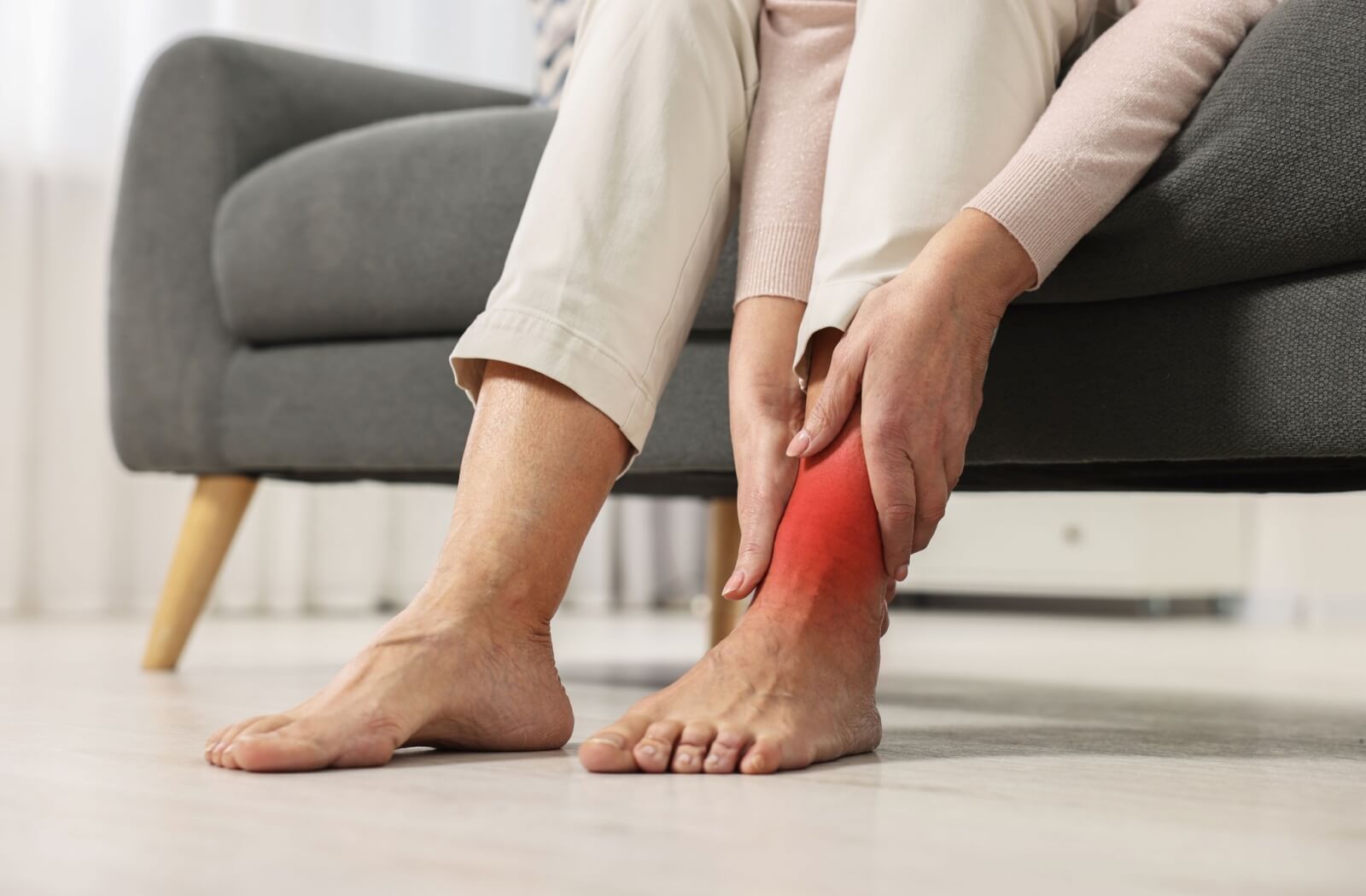What Causes Swollen Ankles in Seniors?
- Posted on
- By Mira Vie Senior Living

Once we reach a certain age, even the smallest discomforts may be hiding a more significant problem. Swollen ankles are a common challenge for many seniors, but the issue isn’t just one of physical experience—the resulting lack of mobility can affect your loved one’s ability to enjoy social events and activities.
Swollen ankles in seniors often result from reduced circulation, prolonged standing, or underlying health conditions.
So, while swollen ankles aren’t always an emergency, they shouldn’t be ignored. Once you understand the causes, you can better support your loved ones and help them preserve their health and wellness so that they can better enjoy their golden years.
The Facts Behind Swollen Ankles
Swollen ankles are medically known as peripheral edema, though this term can also refer to swelling in your hands or other parts of your lower legs. Peripheral edema occurs when fluid accumulates in the tissues around the ankle joint. Gravity pulls the fluids down to the ankles, causing them to swell. It can happen to people of any age, but older adults are more at risk.
This swelling can range from mild puffiness to severe enlargement, making it uncomfortable for seniors to walk or stand for long periods. Depending on the cause of the swelling, seniors may also experience other symptoms, including:
- Feeling heavy, achy, or stiff
- Bruising or discoloration (especially if they were injured)
- Skin feeling tight or warm
- Pitting
- Shoes or socks not fitting correctly
- Increased weight from fluid accumulation
It’s important to recognize that, while swollen ankles might seem harmless—and sometimes they are—they can indicate more serious underlying health concerns. In cases where swelling is persistent or severe, contact a medical professional immediately.
Causes of Swollen Ankles in Seniors
One of the simplest causes of swollen ankles is an injury. Anyone can bruise their ankle, but seniors are typically more susceptible to injuries and take longer to heal. Swelling is rapid in such cases, so usually it’s easier to pinpoint the cause and tell a doctor.
However, sometimes swelling can come on slowly, in which case it might only be noticed once a person’s socks feel too tight or their shoes fit incorrectly. If such swelling doesn’t go away, it could be caused by various medical conditions, such as:
- Venous insufficiency: If the veins in the leg are damaged or weakened, they could have difficulty sending blood from the limbs back to the heart, causing blood to pool in the legs. This is one of the most common causes of peripheral edema in people over 50.
- Kidney disease: The kidneys balance fluid levels in the body. Impaired kidney function can lead to fluid retention, meaning that swollen ankles may be an early sign of kidney problems.
- Arthritis: Inflammatory conditions like arthritis can cause swelling and stiff joints, including the ankles.
- Blood clots: A blood clot can prevent blood flow. When clotting happens in a deep vein in the leg, it’s called deep vein thrombosis, and it can lead to sudden swelling and pain. This usually happens in 1 leg and can lead to serious complications if left untreated.
Lifestyle factors can increase your loved one’s likelihood of developing swollen ankles or one of the conditions that may cause them. For example, a diet high in sodium can lead to fluid retention, while prolonged periods of inactivity can impair circulation, causing fluids to linger in the legs. Furthermore, certain medications can cause swelling as a side effect, particularly those prescribed for high blood pressure or pain management.
How to Prevent Swollen Ankles
Thankfully, you can help encourage your loved one to take some practical steps to reduce or prevent ankle swelling:
- Stay active: Encourage regular, gentle exercises like walking or swimming to promote circulation and prevent fluid buildup. These activities can not only help with swelling, but they can also improve overall cardiovascular health.
- Manage diet: Reducing sodium intake can minimize fluid retention. Encourage a balanced diet rich in fruits, vegetables, and lean proteins to support overall health and well-being.
- Hydrate well: Drinking enough water helps maintain a healthy fluid balance in the body. Proper hydration supports kidney function and can help prevent fluid buildup.
- Maintain a healthy weight: Extra weight can put pressure on veins and impede circulation. Encourage weight management through a balanced diet and regular exercise.
- Manage underlying conditions: Consult with your loved one’s doctor about managing chronic conditions like diabetes or hypertension.
- Elevate the legs: Encourage your loved one to rest with their legs elevated to encourage fluid to return to the heart.

When to Seek Medical Help
There are certain situations where swollen ankles may indicate a more serious condition that needs to be looked at. Here’s what to watch out for:
- Swelling that occurs suddenly or is accompanied by pain, redness, or warmth.
- Difficulty breathing or chest pain, which could signal heart issues.
- Persistent or worsening swelling.
Ignoring the symptoms or trying to treat the condition without professional guidance can lead to even more complications. Doctors can offer tailored advice and, if necessary, adjust medications or recommend further tests to determine the root cause of the swelling.
Keeping Seniors on Their Feet
Recognizing your loved one’ symptoms is the first step in helping them recover. It goes without saying that their well-being is always top of mind—and it’s top of our mind too at Mira Vie Senior Living
We invite you to book a tour and see firsthand how our community supports seniors and their families. Let’s take proactive steps together towards healthier, happier days!
Related Articles

10 Early Signs & Symptoms of Dementia: What to Look Out for in Your Loved One
Key Takeaways Occasional forgetfulness is normal, but consistent changes that disrupt daily life may signal